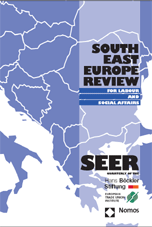Montenegro’s prospects for European integration: on a twin track
Montenegro’s prospects for European integration: on a twin track
Author(s): Dragan ĐurićSubject(s): Politics / Political Sciences
Published by: Nomos Verlag
Keywords: Montenegro and European Integration;
Summary/Abstract: As the State Union of Serbia and Montenegro approaches its fourth year, the promised results of its fast progress toward European integration are lacking. The union dates to 14 March 2002 when, under the great influence and pressure of the EU High Representative for Foreign and Security Policy, Mr. Javier Solana,1 the so-called Belgrade Agreement was signed. Since then all that the State Union has done is to show its own non-functionality and to keep Serbia and Montenegro in a secure, last place among the countries of the western Balkans in the race toward EU membership. This work will analyse in detail why the model of the State Union of Serbia and Montenegro has proved to be ineffectual for the processes of transition, democratisation and progress in the EU Stabilisation and Association Process (SAP). That is, what are the current prospects for the development of democracy and European integration in Montenegro?
Journal: SEER - South-East Europe Review for Labour and Social Affairs
- Issue Year: 2004
- Issue No: 04
- Page Range: 79-105
- Page Count: 27
- Language: English

